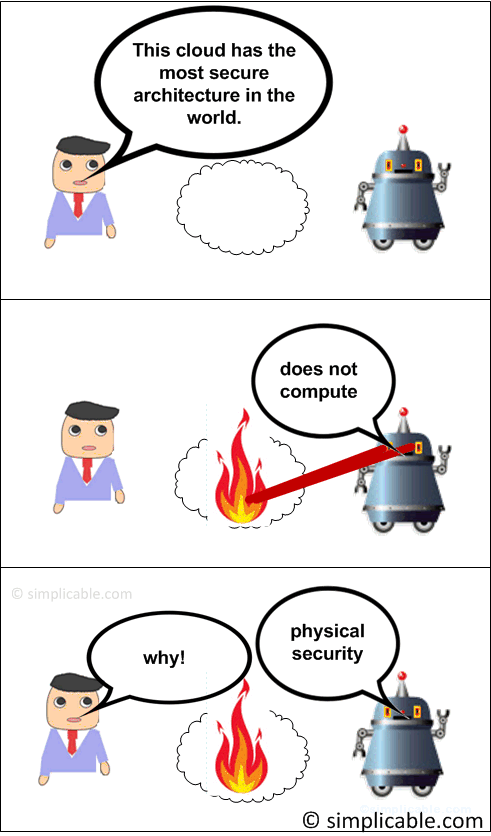Physical Security Explained
posted by Anna Mar, June 07, 2013Physical security is real world security. The type of security that existed long before the information revolution.

It's a collection of strategies and tools for securing people, locations and physical assets. It's things like sprinkler systems and security guards.
Definition: Physical Security
Physical security is the protection of people, locations and equipment.
Physical Security vs Information Security
There's a strong tie between physical security and information security. Firstly, information assets must be physically secured. Secondly, physical security is increasingly automated and integrated with computer and communication infrastructure.In many organizations, physical security falls under information security.
So What?
There's no sense securing a network if someone can just cut your link or physically access your equipment.Protecting your people, systems, offices, data centers, communications links and infrastructure from is a key component of any security program.
Examples of Physical Security
Physical security is anything that's used to secure people, locations and equipment. For example:- Locks
- Security guards
- Alarms
- Access cards
- Video surveillance
- Doors
- Mantraps
- Fire alarms
- Intruder alarms
- Heat sensors
Design Considerations
The goals of physical security extend beyond the objective of reducing the risks of security incidents. Other considerations include:- Aesthetics
Security features may be designed to be aesthetically pleasing. For example, potted trees can be used as a vehicle barrier instead of a fence. - Privacy & Human Rights
Privacy and human rights are an important factor in the design of physical security. There's a trade off that needs to be struck between security and freedoms. - Health & Safety
Physical security may include features for health and safety such as procedures for helping sick or injured employees. - Accidents & Natural Disasters
Physical security strategies and tools may also be used to prevent accidents such as fires or protect against natural disasters. - Corporate Culture & Community Norms
Your people won't be productive if they feel that they're working in a prison. Security designs ideally align with your organization's working norms, habits and customs.

Next: Honeypot Explained (Security Technique) »
 IT Security Guide
A guide to information security including cheat sheets, best practices and checklists.
IT Security Guide
A guide to information security including cheat sheets, best practices and checklists.
|
Recently on Simplicable

| Authentication vs Authorizationposted by Anna MarIt is easy enough to confuse authentication and authorization. |

| Multifactor Authentication Explainedposted by Anna MarHow to confirm the identity of users and entities. |




















